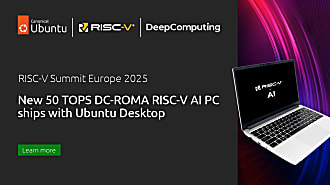Victor Tuson Palau
on 25 May 2012
Have you been wondering if your Web application will work with the new generation of Hyperdense ARM Servers? Now you can easily find out by using Ubuntu and Amazon Web Services.
For over 4 years, Canonical has been supporting Linux on ARM. Ubuntu Server 12.04 is our first Long Term Support on ARM.
As a confirmation of Ubuntu’s leadership position on hyperdense servers, Calxeda unveiled earlier this month their ARM Server platform at UDS-Q Oakland.
Now, Canonical makes available in Amazon Web Services an AMI image for developers wishing to experiment with Ubuntu ARM Server. Dann Frazier is the engineer behind this initiative. I took some of his time today to asking a few questions:
How did this came about?
We were wanting to do some internal functional testing of the 12.04 release across our global team without shipping hardware around. We had a QEMU model with us and using cloud systems to host it seemed like an excellent way to grow our (emulated) machine count.
Can you give me some examples of what could I do with it?
Basically, anything you can do with Ubuntu Server. You can install packages, deploy Juju charms, test your web applications, etc. However, I would strongly suggest not using it for any production work or performance testing – being an emulated environment, you will notice some overhead.
Who do you expect will use this new AMI?
Developers looking to test their applications on ARM, people wanting to test Juju charm deployments in a multi-architecture environment, and anyone just looking to kick the tires.
This is all great, How do I get my hands on it?
Canonical has published an AMI on Amazon EC2. You will need an Amazon Web Services account, then just go into your Management Console for EC2 and launch a new instance. Select “Community AMIs” and look for AMI ID ‘ami-aef328c7’. (We’ll keep the latest AMI ID posted at http://wiki.ubuntu.com/ARM/Server). Or click here.
Are there any limations compared to a real hardware box?
The AMI provides an Ubuntu 12.04 (‘armhf’) system running on an emulated hardware system. Performance is limited due to the emulation overhead. This AMI requires the use of an m1.large instance type due to memory requirements.
Once again, thanks to Dann and the Canonical team for sharing this neat tool with the community. It sounds great and easy to set up. So, What are you waiting for?




